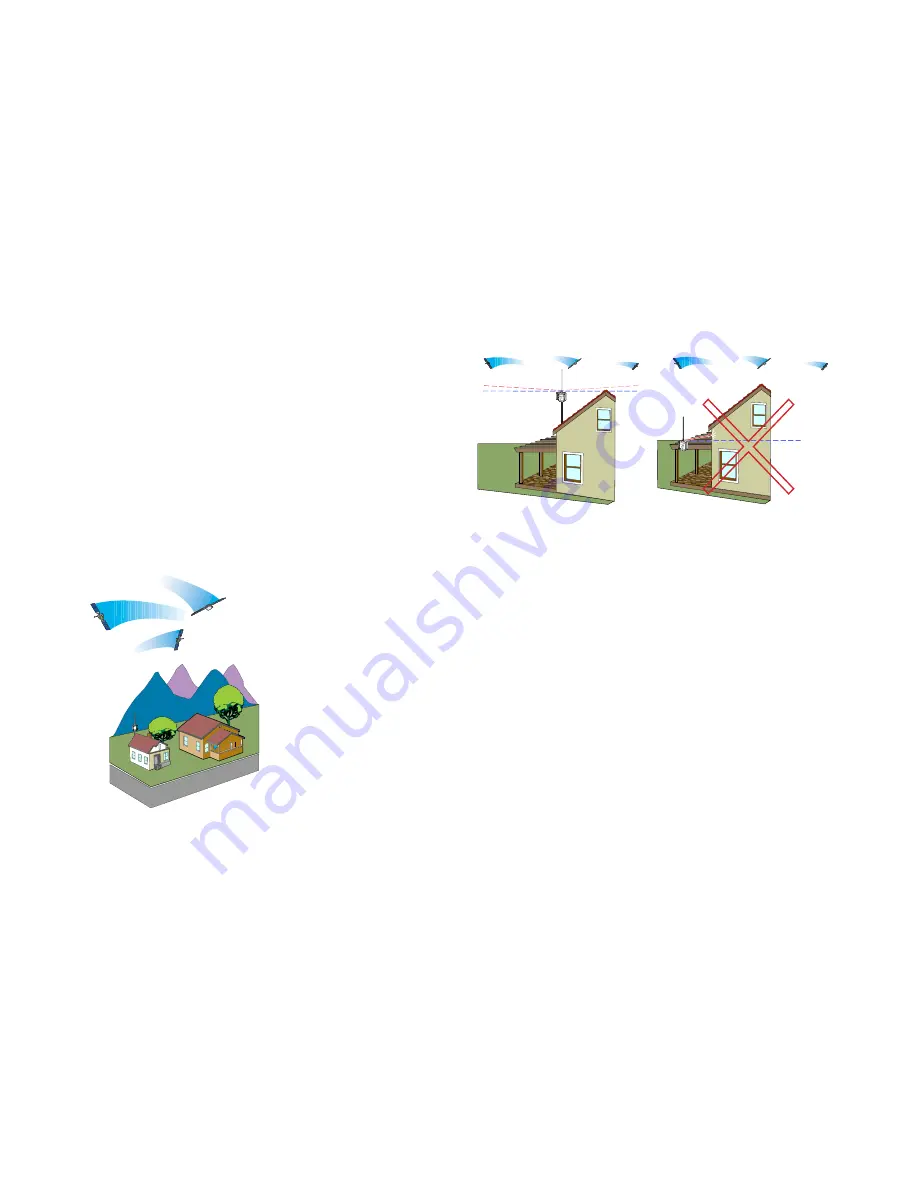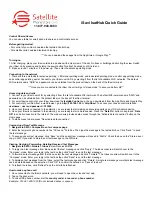
Introduction
2
Because you don’t know what part of the sky the satellites will be in,
you need to find an RAU location where the antenna can see as much
of the sky as possible. The rule is that the antenna of the RAU should
see the entire sky down to 10 degrees above the horizon.
The QGFSP and satellites use a different kind of radio signal: high
frequency microwave signals. Unlike television and AM or FM radio
signals, or even cellular phone signals, microwave radio signals do
not bend. They are strictly line of sight. This means that these
signals do not go through walls. They do not go around hills or
through trees or over bushes. If something gets between the satellite
and the QGFSP, the phone won’t work.
Be sure to install the QGFSP such that there are no objects blocking
the view of the sky. To help you figure out if objects are above 10
degrees or below 10 degrees, you can use the sighting tool that is
included in your kit. Use of the sighting tool is explained in How to
use the sighting tool on page 13.
Sometimes it won’t be possible to
get such a full clear view. In that
case, you should try to find a
location that gets as full and clear
a view of the sky as possible.
Can I mount the RAU on the side
of a building?
Generally no. Mounted on the
side of a building, the antenna
would only see half the sky.
However, you could mount a mast
bracket on the side of a building,
then extend the mast up above the
roof, and mount the RAU there. See Figure 1 on page 1 for how that
could be done.
Fine points of antenna location
As we said before, the Globalstar satellites are always moving. They
zip across the sky, taking from 10 to 15 minutes to go from horizon to
horizon. Sometimes a person will install an RAU in a bad location,
and be fooled into thinking the installation is correct just because he
was able to make a good phone call. Don’t be fooled! Just because
you can make a call now doesn’t mean you will be able to make a call
a few minutes later when the satellites have changed position. The
only way to ensure that the QGFSP will work reliably and
consistently is to make sure that the antenna of the RAU can see
most of the sky. You can’t tell a good location from a bad location by
making a test call.
Sometimes it is very difficult to find a location where there is nothing
at all in between the antenna and some part of the sky. Some obvious
challenges are trees, power lines, television antennas, and lightning
rods. The ideal location has nothing in the way. However, some
things can sit in the path between our RAU antenna and the satellite
without causing harm.
Содержание GSP-2800
Страница 1: ......








































